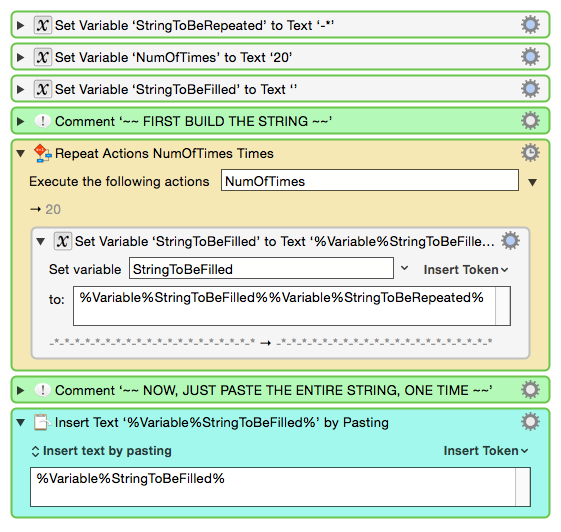


If you plan to use Ulysses, check out these helpful tips).I recently used Deckset to develop a new 30 minute presentation. (You can use any text editor with Deckset. Deckset works seamlessly with Ulysses, allowing me to quickly edit my presentations on my phone, my tablet, or my Mac. Because Deckset uses Markdown, I find myself concentrating less on making my slides look attractive and more on content. As this review of Deckset 1 in Macworld says: “It’s designed for the average person who needs to make beautiful slides without the muss and fuss of Keynote or PowerPoint.” With the release of Deckset 2 and its outstanding features, the application has become my go-to application for rapid preparation of presentations.

Deckset is an amazing application for iOS that converts Markdown files into presentations.
Keyboard maestro macro outlook software#
It’s easy to get lost in software features-spending hours tweaking backgrounds, transitions, and text placement.Which brings me to Deckset. Many presenters rely too heavily on the glitz offered by the software at the expense of content. The reality is that presentations are deeply ingrained in business and academia. Some influential thinkers, such as Edward Tufte, argue bulleted presentations shouldn’t be used at all. Speeding up the development of a presentation is the focus of this entry.Presentations are used throughout business and academia to transmit ideas. I still love Plaintext / Markdown.There is another requirement of my job that relies just as heavily on bloated software-presentations. I still dislike bloated software packages that get in the way of my final goal. Although technology has changed, some things have not. Now I use Scrivener for all my long-form writing. In 2012, there was no iOS version of Scrivener. Now I use Ulysses for almost all my short-form writing. At the time I wrote the entry there was no Ulysses. The entry was about avoiding the distraction of Microsoft Word and Apple Pages while writing. My workflows have changed since I wrote my entry: “ Why I Use Plaintext” in June 2012. Only the search criteria-this returns ALL information in the database (including abstracts, PDFs, and extracted text as described in this entry). Using Smart Searches, The abstracts are automatically sorted into folders.For most topics I have two Smart Searches:Īs shown below that includes the search criteria AND searching for the tag “Abstracts Inbox” we talked about earlier-this finds only abstracts relevant to the search,
Keyboard maestro macro outlook full#
Now that the information is in DTP I am able to take full advantage of its search functionality and artificial intelligence.I make extensive use of Smart Searches in DTP. Finally, there is a field for me to add my own comments to the new DTP file.Once the abstracts are imported into DTP, I make sure to index the folder so the new information is included in search. The template also includes a link back to the publication in Bookends. DTP grabs all the highlighted abstracts from Bookends.The imported information includes Author, Title, Year, Abstract, and Keywords. I highlight all the new manuscripts in Bookends.I then move over to DTP and select the Data:New From Template: Education: Reference (from Bookends) menu item. I like reverse chronological order so I can see the last date I imported abstracts. As you can see below, a sub-folders of zz-Inputs is an “Abstracts Inbox.” When I set up this folder in DTP, I made sure the folder WAS NOT excluded from tagging (this is done by option-clicking on the folder and making sure “exclude from tagging is UNCHECKED).When it’s time to transfer abstracts from Bookends, I first click to select the Abstracts Inbox folder in DTP.I then open up Bookends and sort the fields by the “Added” Column. In DTP, I’ve organized these folders into a “zz-Inputs Folder”. Once imported into DTP, these abstracts can be parsed using smart folders (enduring searches) that make your literature library a dynamic resource for writing.I have a single DTP database that has indexed the various folders critical in my writing process (e.g. I’ve made heavy use of a particular built-in Devonthink Template that automates the migration of abstracts from Bookends to DTP (with a link back to Bookends). Although Tinderbox is great for visually organizing your notes, it can’t compare to the search capabilities of DevonThink Pro.Since switching to Bookends, I’ve found myself spending less time in Tinderbox and even more time in Devonthink. My old workflow required Keyboard Maestro to extract abstract information to Tinderbox. I wrote about Sense-making of the Academic Literature back when I was using Papers.


 0 kommentar(er)
0 kommentar(er)
